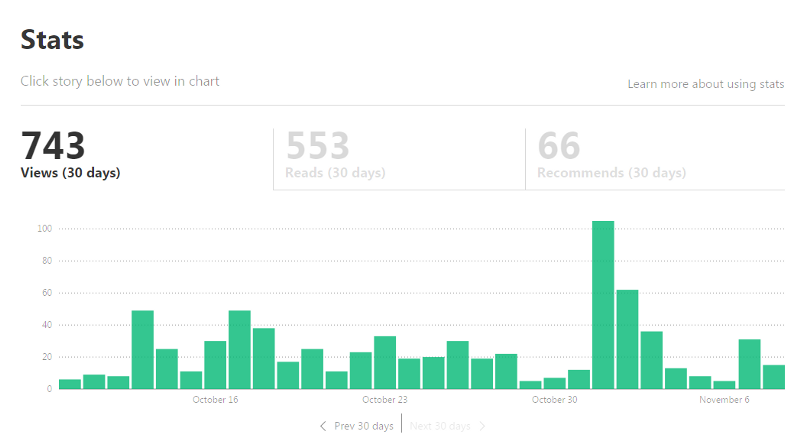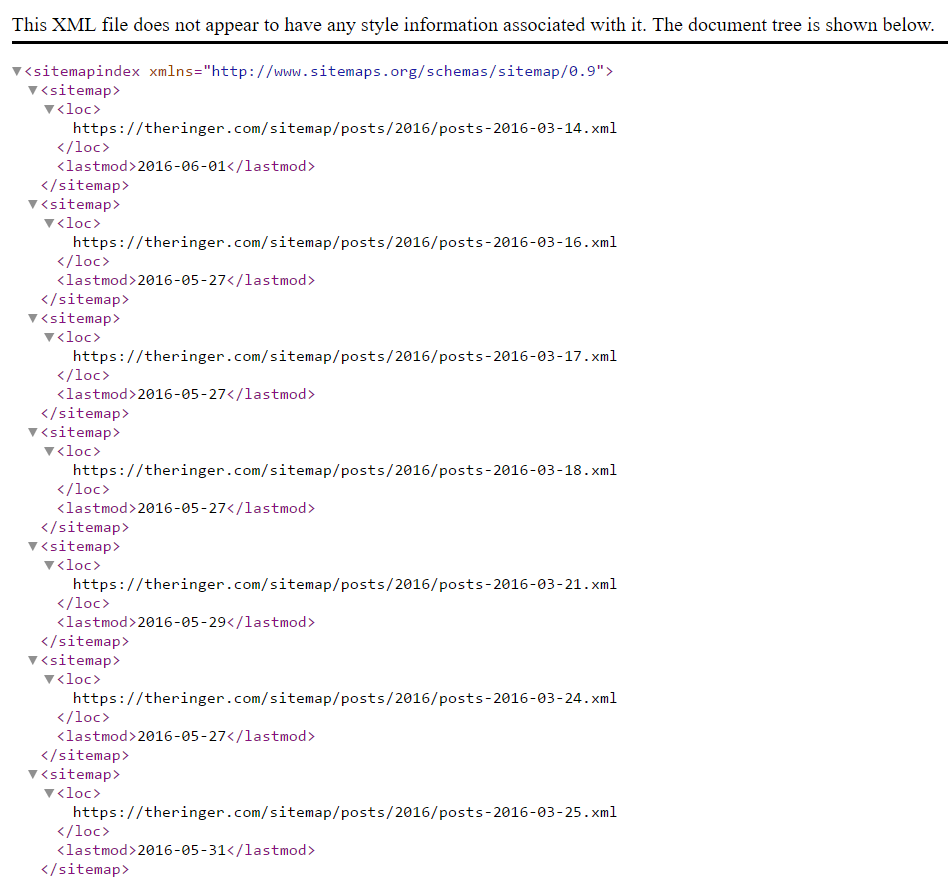Should you use Medium for your company’s content?
You’ve likely read an article on Medium before, even if you didn’t notice the boxed “M” hanging out in the corner of your screen. The platform houses tons of popular content created by both its users and publications alike. A place for thoughtful, long-form, niche and technical content, it’s not surprising that everyone from CEOs to freelance journalists posts there regularly. Increasingly, businesses and publications have been using this platform for their content distribution. With all that in mind, is Medium the right way for your business to reach new readers?
What is Medium?
Thirty million users visit the content platform Medium.com each month. Founded by Ev Williams (the former CEO of Twitter), the platform-CMS-community hybrid has made a lot of changes in how it operates alongside both publishers and marketers. An increasing number of businesses are using Medium for their company blogs, and many publishers are starting to host and distribute their entire content library through it. Like any platform, there are pros and cons for its utilization in a business’s digital marketing efforts. By examining the capabilities and options businesses have in Medium through an organic search marketing perspective, I hope to provide a deeper insight into if you should utilize Medium to improve your company’s digital content community.
Medium as a CMS
Managing your content on Medium is extremely simple. There aren’t a ton of different editing options, but it is all you need to publish written digital content effectively. Medium is a CMS without a million different plugins and add-ons, making the publishing experience fast and easy. Unlike WordPress, which has an endless amount of design themes to choose from, Medium allows for very limited on-page visual customization. This is certainly a con for larger sites, as it limits your use of visual branding elements that make your company unique.
Medium allows for Google Analytics integration to its sites, but it also has a limited amount of built-in measurement for your posts both individually and as a group in its CMS. It uses three metrics: Views, Reads and Recommends.

A graph showing the standard Medium analytics view.
‘Views’ refer to the number of users that clicked on an article. ‘Reads’ is the number of people who actually read the article; which, as far as we can tell, is calculated using the amount of time a user spends on the page and the estimated read time that is shown at the top of each article. ‘Recommends’ is the Medium equivalent of a share on its platform. The emphasis that the analytics metrics put on the time users spend on the page suggests that the Medium algorithm favors posts that people read an entire article. This is one of the reasons the platform works so well for long-form, informative and academic content.
Medium as a Content Platform
Certainly one of the most appealing parts of utilizing Medium is its large network of engaged users. The company reported a 300% increase in users since last year and has continued to grow. Many large publishers and companies use Medium including sweetgreen, General Electric and Signal v Noise (BaseCamp’s Blog).
Medium’s user-base is very focused on getting high-quality content that is not watered down. This is shown through Medium’s pivot in its business model earlier this year where it no longer offered advertising services for publishers. Their business model relies on putting more of an emphasis on content. So, if you’re a publishing site that gets most (if not all) of its revenue from banner ads, Medium may not be a wise choice for your business.
Recently, Medium has shifted its business model to open up a membership program where readers pay a monthly fee for access to extra features (like audio versions of popular posts) and can “clap” for posts they really enjoy and send the writers a portion of their monthly membership fee for compensation to the writer. There haven’t been any studies done yet to indicate that this has slowed the growth or the engagement on the platform, as the monthly fee is also required to access all of the content on the platform.
Despite that, Medium is an excellent platform for emerging publishers or startups’ blogs for this reason. Users actually read the content. The Medium team puts a heavy focus on the amount of time spent reading each post, and measures time reading meticulously, taking pauses and sidescroller movement into account. In 2016 its users spent an average 4.5 million hours per month reading on the platform. Its users can also subscribe to blogs, authors, tags or categories of posts that they like in their custom feeds. The essentially built-in audience that Medium provides to its publishers is a great platform for your site to jump off from. It helps to build your users in a quicker and easier way.
Case Study: TheRinger.com
TheRinger.com was one of the first large publishing sites that began using Medium for their initial content distribution strategy. The Ringer is a product of the Bill Simmons’ podcast network and already has an audience following from its previous incarnation (Grantland). In this interview by Recode, Simmons expands on his media projects’ relationship with the Medium platform. He explains that initially, they utilized Medium as a way for them to maintain a website without spending most of their funds on development projects. This is another way small or startup companies can utilize medium as both a content network and a platform.
Update: As of June 14th, 2017 The Ringer as migrated off of the Medium platform and now partners with Vox Media. In the case of this article, it makes sense to use The Ringer as an example of a company that grew with Medium and then outgrew the platform and easily transitioned to a new one after ending its relationship.
Custom domains vs. Medium-generated domains
Later, in the above-mentioned podcast interview, Simmons goes on to explain that even now that they can no longer sell banner ads on the site (they are funded entirely by podcast ads anyways), that they will stay on the platform a little bit longer. However, they intend to build their own site eventually. This shows that many new websites that are looking to eventually ‘outgrow’ Medium, should opt to use a custom domain rather than a Medium generated domain (like, www.medium.com/site-name). Although depending on a platform to both hold and distribute all of your content is considered risky, generally. It is possible to move your content off of Medium, and this would be much easier if you utilize a custom domain rather than Medium’s.
The Ringer having migrated off of the platform has experienced minimal issues with the transition.
On the other hand, if you plan on staying inside of the Medium platform, for much smaller companies and blogs, it could also be an advantage to utilize Medium’s high domain authority (92), to help boost your traffic in organic search results rather than switching to your own domain and starting from zero.
What if you already have a website?
All of the suggestions I’ve made so far about the utilization of Medium in your digital marketing efforts have been centered around newer sites. However, there are a few ways to get your content seen on its network if you already have a site that has a regular audience and a domain.
- You can republish your content on Medium. Medium allows you to canonicalize content you post onto the Medium network to your own website. This makes it so you get neither a duplicate content penalty or get outranked by your Medium posts in the SERP. Just, make sure that you are canonicalizing back to your site’s original post. You can import a story here. Baremetrics, an analytics tool, recently published a post revealing that they actually had a larger audience outside of the medium platform and as a result have largely removed their content from Medium as they have more success with their website off of the platform. However, in the post they do note that they republish content after its initial publish date by 2 weeks and use the import tool to canonicalize to their own site.
- You can also migrate your site to the platform fairly easily. However, do not do this unless you are sure that its limited CMS and user-base is right for you. If you create a lot of long form informative content and have limited development help or need, migrating your site to Medium is an option to consider.
Medium and Technical SEO
When I first started examining Medium from an SEO perspective, I was alarmed by the amount of URLs associated with each page. Both author and post pages use around eight URLs similar to, “https://theringer.com/@michaelweinreb?source=———1”. However, all of these extra URLs are for tracking purposes and are properly canonicalized, so there should not be duplicate content issues as a result.
Medium also has an interesting sitemap strategy. All of Medium’s sitemaps are auto-generated, as many platforms are. What makes Medium’s different is it generates a different sitemap section of the index sorted by date (see image below):

Generating sitemaps by date is very effective for timely content. So, if your site has a lot of content that is centered around news or trending topics, Medium’s sitemap sorting strategy should have a positive impact on your search visibility.
These dated sitemaps may also have a correlation with the priority many Medium sites seem to get when it comes to timely content in the SERPs, making them a sound strategy for news sites.
Takeaways
While using Medium for your blog (or your site) might not be the right choice in every situation, there are many ways that this platform can help you to grow an audience more quickly or begin a content heavy site with minimal development startup. This platform is ideal for small startup businesses’ blogs and publishing sites just starting to grow an audience.
Like most platforms, it’s a risk to put all of your content into a separate companies hands, and given how much Medium has changed already, this is certainly something to keep in mind when choosing to serve your blog on it. It has a very engaged audience of readers, and if your content resonates with its community, it can really help get your content out there. Medium is a great place for long-form, educational and intellectual content, so if your blog or website fits into those genres, Medium is certainly a platform to consider.




